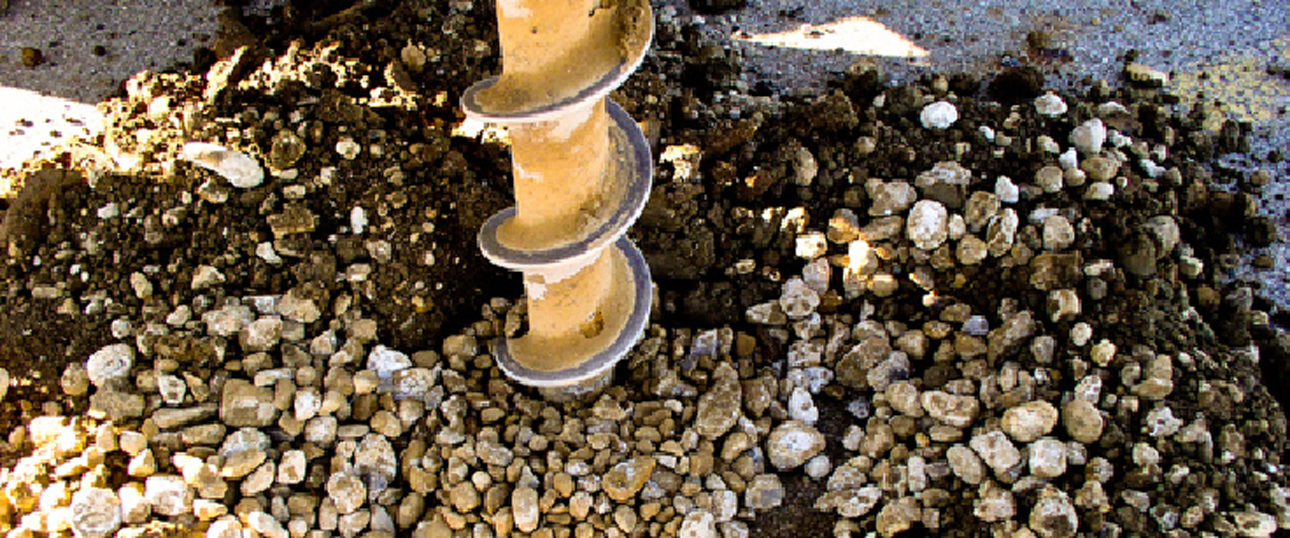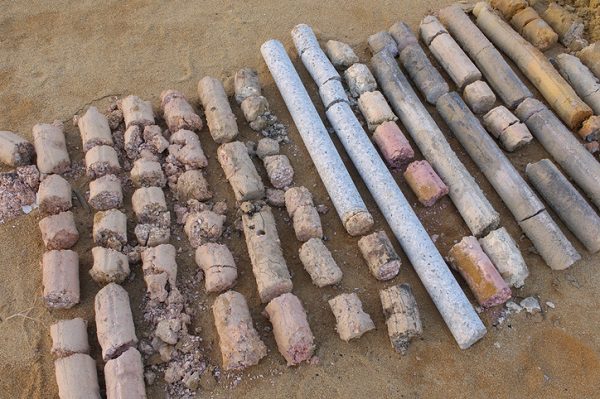Why All About Geotechnical Engineering Matters in Today's Facilities Advancement
Why All About Geotechnical Engineering Matters in Today's Facilities Advancement
Blog Article
The Relevance of Geotechnical Design in Attending To Environmental Challenges and Enhancing Building And Construction Safety And Security
Geotechnical engineering serves as a cornerstone in the intersection of environmental stewardship and building and construction safety and security, providing essential insights right into the behavior of soil and rock under different problems. By executing calculated site examinations and tailored mitigation measures, geotechnical engineers play an essential role in safeguarding both human lives and ecological stability.

Duty of Geotechnical Design
Geotechnical design plays an essential duty in the style and building and construction of infrastructure by addressing the actions of dirt and rock materials under different conditions. This area of engineering is necessary for understanding the interaction between structures and the ground, that includes identifying the load-bearing capacity of dirt, evaluating stability, and forecasting possible negotiation or failure.
Geotechnical designers are liable for conducting site investigations, which involve sampling and testing dirt and rock to collect data on their physical and chemical homes. This info is essential for making foundations, maintaining walls, and other earth-retaining structures that make certain safety and security and long life. Geotechnical design educates the selection of proper building and construction approaches and products, thus reducing risks linked with soil actions.
Furthermore, the assimilation of geotechnical engineering concepts into urban preparation and environmental management is important for addressing obstacles such as ground contamination and groundwater management. By recognizing geotechnical elements, designers can develop lasting services that enhance the strength of facilities against natural risks, while also advertising ecological stewardship. Eventually, the function of geotechnical design is essential for achieving risk-free, resilient, and eco mindful building techniques.
Soil Erosion Mitigation
Dirt disintegration presents a considerable risk to both environmental stability and infrastructure honesty, affecting around 24 billion loads of abundant soil shed yearly worldwide. This sensation is intensified by aspects such as deforestation, urbanization, and inadequate farming practices. Geotechnical design plays a critical function in establishing efficient dirt erosion mitigation methods that safeguard both the atmosphere and building tasks.
One approach involves the implementation of disintegration control methods such as vegetation planting, which maintains soil via root systems. Furthermore, the building and construction of maintaining balconies and walls can successfully lower surface area overflow and secure prone areas from erosion. Appropriate drain design is additionally crucial; it decreases water build-up and guides excess drainage far from critical frameworks.
Moreover, geotechnical designers employ dirt stablizing techniques, such as the application of geotextiles and biodegradable floor coverings, to enhance soil communication and avoid degradation - all about geotechnical engineering. Normal monitoring and evaluation of erosion-prone sites enable prompt interventions, guaranteeing lasting sustainability. By integrating these approaches, geotechnical engineering not just alleviates the effects of dirt disintegration yet also contributes to the resilience of facilities against ecological difficulties, eventually promoting a safer and extra sustainable built environment
Groundwater Defense Methods
Groundwater functions as an important resource for alcohol consumption water, agriculture, and commercial processes, making its defense necessary for environmental sustainability and public health and wellness. Efficient groundwater defense strategies are vital in mitigating contamination risks and ensuring the long life of this source.

Routine tracking of groundwater quality is likewise necessary, making it possible for very early discovery of contamination resources and promoting timely remediation initiatives. Utilizing sophisticated innovations, such as geophysical surveys and remote picking up, help in recognizing possible dangers to groundwater books.
In addition, public education and learning and stakeholder engagement are critical, promoting area support for groundwater protection efforts. geotechnical engineer description. By integrating governing procedures, technological advancements, and area participation, we can produce an extensive structure that safeguards groundwater resources while promoting lasting growth and building and construction practices
Landslide Danger Management
Landslides position substantial risks to both human safety and security and framework, making effective threat management strategies essential. Geotechnical design plays an important function in recognizing, examining, and mitigating landslide dangers. A thorough understanding of incline stability, dirt technicians, and hydrology is vital for establishing effective risk monitoring plans.
The initial step in landslide threat monitoring includes thorough site examinations, which include geological mapping and dirt testing. These examinations help engineers assess the capacity for landslides by determining vital factors such as slope angles, soil composition, and water content. Making use of sophisticated modern technologies such as remote picking up and geophysical surveys can boost the accuracy of these analyses.
When dangers are recognized, proper mitigation procedures can be implemented. These might include engineering options such as maintaining wall surfaces, drainage systems, and slope stablizing techniques. Checking systems need to be developed to identify signs of ground motion and modifications YOURURL.com in water levels, enabling for positive treatments.

Enhancing Building And Construction Safety
Construction websites typically present a myriad of hazards that can threaten worker safety and security and job stability. Geotechnical engineering plays a vital role in improving building safety by giving important understandings right into subsurface conditions. Via detailed dirt and rock analysis, geotechnical designers can identify potential threats, such as soil instability, groundwater concerns, and seismic susceptabilities, which might jeopardize the security of building tasks.
Executing geotechnical options, such as appropriate foundation layout and using maintaining frameworks, minimizes these threats considerably. These remedies not just guarantee the security of the structures being developed yet also develop a much safer working setting for building and construction workers. Furthermore, strenuous surveillance and assessment of website problems throughout the building procedure are crucial. Using advanced technologies like ground-penetrating radar and inclinometer systems enables real-time information collection, enabling timely interventions when hazards are detected.
Moreover, promoting a culture of safety and security via training and adherence to developed safety methods even more boosts construction site safety. By incorporating geotechnical knowledge right into the preparation and execution phases, building and construction jobs can accomplish greater safety and security criteria, eventually safeguarding employees and guaranteeing effective project conclusion.
Verdict
To conclude, geotechnical design acts as an important self-control in dealing with ecological difficulties and advertising building safety. Via reliable dirt disintegration mitigation, groundwater security methods, and landslide risk management, geotechnical designers add to the growth of resilient infrastructure. The integration of these practices fosters a more secure building atmosphere and boosts the sustainability of civil design projects. Ultimately, the experience of geotechnical designers is crucial in protecting both all-natural sources and human lives against potential risks.
Geotechnical design serves as a keystone in the crossway of environmental stewardship and construction security, giving important understandings right into the habits of soil and rock under various conditions. Geotechnical design educates the selection of ideal building and construction techniques and materials, consequently decreasing dangers linked with dirt find out here behavior.
Geotechnical design plays a crucial function in creating reliable soil erosion mitigation methods that protect both the atmosphere and construction tasks.
Furthermore, geotechnical designers employ dirt stabilization methods, such as the application of geotextiles and naturally degradable floor coverings, to enhance soil cohesion and stop degradation. Via extensive dirt and rock evaluation, geotechnical engineers can identify potential threats, such as soil instability, groundwater concerns, and seismic susceptabilities, which may compromise the safety of building and construction tasks.
Report this page